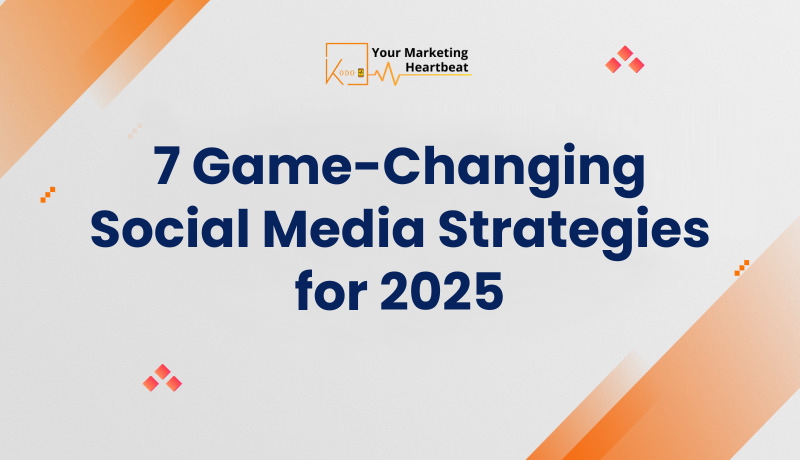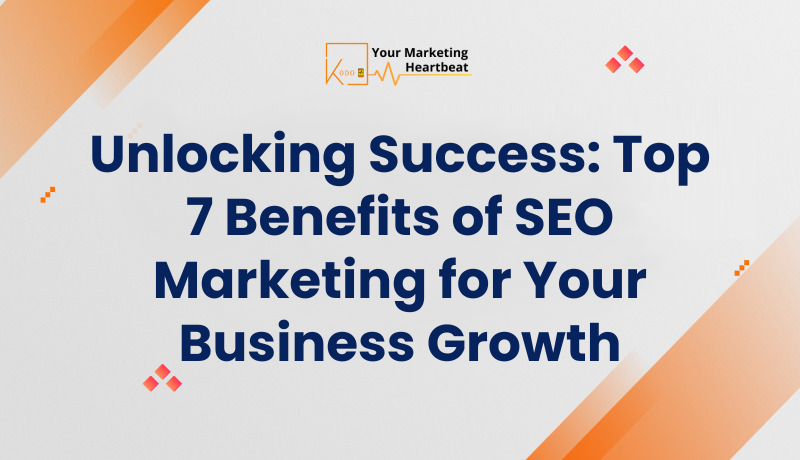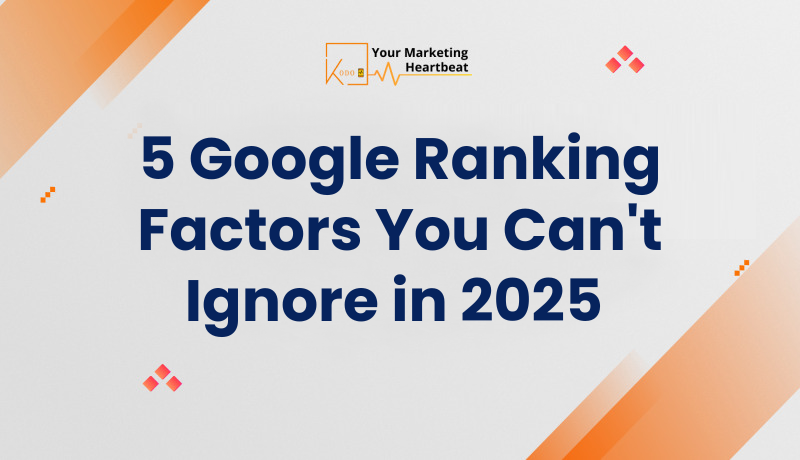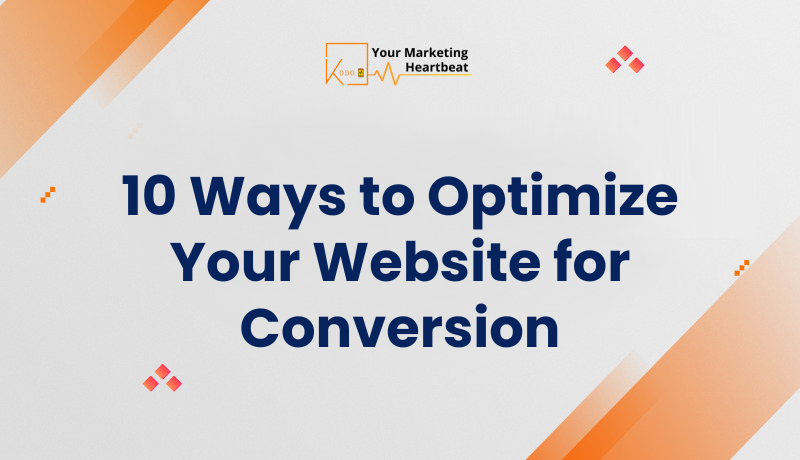
As we approach 2025, the Social Media Marketing landscape continues to evolve at a breakneck pace. Marketers face an increasingly competitive arena where platform updates, shifting algorithms, and changing consumer behaviors demand constant adaptation. Therefore, adopting innovative strategies is essential to stand out, foster deeper relationships, and drive meaningful interactions in 2025.

The Social Media Ecosystem in Flux
Before exploring specific strategies, it’s crucial to grasp the evolving social media landscape. Notably, major platforms like Meta (previously Facebook) are under regulatory scrutiny in the EU, whereas TikTok’s future in the U.S. remains uncertain. These developments underscore the need for marketers to diversify their social media presence and stay agile in their approach.
As we explore the top social media marketing strategies for 2025, keep in mind that flexibility and adaptability will be key to success in this ever-changing landscape.
1. Navigating the Platform Wars: X, Bluesky, and Threads
The social media platform landscape is undergoing a significant shift, with new players challenging established giants. This section explores the ongoing battle between X (formerly Twitter), Bluesky, and Threads, and how marketers can leverage these platforms effectively.
The Decline of X and the Rise of Alternatives
Ever since Elon Musk acquired Twitter (now rebranded as X) in 2022, the platform has navigated a series of controversies and challenges. These issues have led to a notable exodus of users and advertisers, creating opportunities for alternative platforms to gain traction.
According to recent data, X lost approximately 2.7 million active users in the United States within just two months following the 2024 U.S. election. This decline has opened the door for emerging platforms like Bluesky and Threads to capture market share.
Bluesky: A Decentralized Alternative
Developed by X’s founder, Jack Dorsey, Bluesky has emerged as a promising alternative for users seeking a platform similar to X. With its decentralized structure and user-friendly interface, Bluesky has attracted nearly 2.5 million users during the same period that X experienced its decline.
Key features of Bluesky include:
- Decentralized architecture
- Short-form messaging capabilities
- Support for images and videos
- Growing adoption by major brands and media outlets
Threads: Meta’s Contender
While Bluesky has garnered significant attention, Meta’s Threads platform has made even more impressive gains since its launch in 2023. With a current user base of 275 million, Threads benefits from its connection to the Instagram ecosystem and Meta’s extensive resources.
Threads is rapidly evolving, with new features being added regularly:
- Customizable feeds
- Algorithm-driven trending topics
- List-style content (coming soon)
By staying agile and adapting to the changing platform landscape, marketers can ensure their brands remain visible and engaging across the social media spectrum.
2. Harnessing the Power of AI in Social Media Marketing
Artificial Intelligence (AI) is revolutionizing social media marketing, offering unprecedented opportunities for efficiency, personalization, and scale. In 2025, AI will be an indispensable tool for marketers looking to stay competitive in the digital landscape.
The Impact of AI on Social Media Marketing
AI is transforming various aspects of social media marketing, including:
- Content creation
- Data analysis
- Personalization
- Customer service
- Advertising performance
According to Statista, marketers report several key benefits of using AI in social media marketing:
- 38% cite increased efficiency as the top benefit
- 34% appreciate easier idea generation
- 33% note increased content production
AI-Powered Content Creation
AI tools like ChatGPT, Jasper, and Midjourney are revolutionizing content creation for social media. These tools can help generate text, images, videos, and even create virtual influencers. However, it’s crucial to remember that the quality of AI-generated content depends and heavily on the input provided.
To maximize the effectiveness of AI-generated content:
- Use custom prompts with specific instructions
- Provide clear guidelines on tone, voice, and style
- Combine AI-generated ideas with human creativity and expertise
- Continuously refine and improve your prompts based on results
By embracing AI in your social media marketing efforts, you can enhance efficiency, improve targeting, and drive better results for your brand in 2025 and beyond.
3. The Rise of Employee-Generated Content (EGC)
In an era where authenticity is paramount, Employee-Generated Content (EGC) is emerging as a powerful tool for building trust and showcasing brand personality. This section explores the growing importance of EGC and how marketers can leverage it effectively in 2025.
The Value of Authenticity in Marketing
According to Edelman’s Trust Barometer, 81% of consumers consider trust in a brand crucial for making purchase decisions. This heightened emphasis on authenticity has led to a shift in marketing strategies, with brands increasingly turning to their employees as valuable content creators and brand ambassadors.
Understanding Employee-Generated Content
EGC refers to any form of content created by employees that represents or promotes the company. This can include:
- Social media posts
- Blog articles
- Videos
- Podcasts
- Behind-the-scenes glimpses
- Employee testimonials
Benefits of Employee-Generated Content
- Increased authenticity and trust
- Humanization of the brand
- Diverse perspectives and stories
- Cost-effective content creation
- Improved employee engagement and morale
- Enhanced recruitment efforts
Implementing an EGC Strategy
To effectively incorporate EGC into your social media marketing:
- Develop clear guidelines for employee participation
- Provide training and resources for content creation
- Encourage diverse voices and perspectives
- Create a system for content approval and curation
- Recognize and reward employee contributions
- Monitor and measure the impact of EGC on brand metrics
By embracing Employee-Generated Content, brands can build stronger connections with their audience, showcase their company culture, and create a more authentic online presence in 2025.
4. The Evolving Role of Hashtags in Social Media Strategy
As we approach 2025, the effectiveness and relevance of hashtags in social media marketing are undergoing significant changes. This section explores the shifting landscape of hashtag usage and provides strategies for adapting to these changes.
The Decline of Hashtag Effectiveness
Traditionally, hashtags have been a crucial tool for increasing content discoverability and engagement on social media platforms. However, recent trends suggest a decline in their effectiveness, making it crucial for businesses to adapt and explore innovative approaches to sustain engagement and visibility.
- Increased spam and clutter associated with popular hashtags
- Changes in platform algorithms that prioritize other factors for content discovery
- User fatigue and decreased engagement with hashtag-heavy content

Platform-Specific Changes
Different social media platforms are approaching hashtags in varying ways:
- Instagram: Removed the option to follow hashtags and no longer displays hashtag-related posts in the main feed
- Twitter (X): Still utilizes hashtags, but their impact on reach has diminished
- TikTok: Relies more on content-based algorithms for discovery, reducing the importance of hashtags
The Rise of Keyword Optimization
As hashtags become less effective, keyword optimization is gaining importance:
- Platforms are increasingly able to understand and categorize content based on natural language
- Users are turning to social media platforms (especially TikTok) as search engines
- Incorporating relevant keywords in captions and descriptions can improve content discoverability
Strategies for Adapting to the Changing Hashtag Landscape
- Focus on high-quality, engaging content rather than relying solely on hashtags
- Use platform-specific features for content discovery (e.g., location tags, mentions)
- Incorporate relevant keywords naturally into your content and captions
- Monitor platform updates and adjust your strategy accordingly
- Experiment with a mix of branded and general hashtags to find the right balance
- Utilize analytics to track the performance of content with and without hashtags
By adapting to the changing role of hashtags while prioritizing content quality and discoverability, marketers can ensure their social media strategies remain effective in 2025 and beyond.
5. The Dominance of Short-Form Video Content
As we look ahead to 2025, short-form video content continues to dominate the social media landscape. This section explores the reasons behind this trend and provides strategies for leveraging short-form video in your marketing efforts.
The Rise of Short-Form Video
As a result of the rising popularity of platforms like TikTok, Instagram Reels, and YouTube Shorts, short-form video content has seen an unprecedented surge. Key statistics highlight this trend:
- Meta reports that 60% of time spent on Facebook and Instagram is now video-based
- TikTok has surpassed 1 billion monthly active users globally
- YouTube Shorts garners over 50 billion daily views
Why Short-Form Video Works
- Aligns with decreasing attention spans
- Provides quick, engaging entertainment
- Easily shareable across platforms
- Allows for creative storytelling in bite-sized formats
- Appeals to mobile-first users
Types of Short-Form Video Content
- Behind-the-scenes glimpses
- Product demonstrations
- User-generated content compilations
- Quick tips and tutorials
- Customer testimonials
- Trending challenge participation
- Brand storytelling snippets
Best Practices for Short-Form Video Marketing
- Maintain brand consistency across videos
- Experiment with different styles and formats
- Encourage employee participation for authentic content
- Analyze performance metrics to refine your strategy
- Cross-promote videos across multiple platforms
- Engage with your audience through comments and responses
- Stay up-to-date with platform-specific trends and features
By embracing short-form video content and adapting to platform-specific best practices, marketers can effectively capture audience attention and drive engagement in the fast-paced social media landscape of 2025.
6. The Shift from Influencer Marketing to Customer-Centric Content
As we approach 2025, there’s a noticeable shift in social media marketing strategies from influencer-focused campaigns to more customer-centric content. This section explores the reasons behind this trend and provides insights on how brands can leverage customer content effectively.
The Evolution of Influencer Marketing
While influencer marketing remains a valuable strategy, its effectiveness has been challenged by:
- Oversaturation of influencer content
- Concerns about authenticity and trust
- High costs associated with top-tier influencers
- Difficulty in measuring true ROI
The Rise of Customer-Centric Content
Brands are increasingly recognizing the power of their own customers as content creators and brand advocates. This shift is driven by:
- Growing emphasis on authenticity in marketing
- Desire for diverse perspectives and real-world experiences
- Cost-effectiveness compared to traditional influencer campaigns
- Improved technology for user-generated content curation
Strategies for Leveraging Customer Content
- Create branded hashtags for user-generated content
- Host contests and challenges to encourage content creation
- Feature customer stories and testimonials prominently
- Develop a customer advocacy program
- Integrate user-generated content into product pages and marketing materials
- Engage with and respond to customer content across platforms
By embracing customer-centric content, brands can build stronger connections with their audience, showcase authentic experiences, and create a more engaging and trustworthy online presence in 2025 and beyond.
7. Navigating Security and Regulation in Social Media Marketing
As we approach 2025, the landscape of social media marketing is increasingly shaped by concerns over security, privacy, and regulation. This section explores the key challenges and opportunities in this evolving environment, providing strategies for marketers to navigate these complex issues effectively.
The Changing Regulatory Landscape
Recent years have seen significant developments in social media regulation:
- Increased scrutiny of platform practices, particularly regarding user data and privacy
- New legislation aimed at protecting younger users
- Ongoing debates about content moderation and platform responsibility
- Growing concerns about the impact of social media on mental health
Key Regulatory Developments
Australia’s Proposed Ban on Social Media for Under-16s
- Potential fines of up to A$50m for non-compliant platforms
- Implementation expected by 2026
- Implications for marketing strategies targeting younger demographics
European Union Investigations
- Ongoing probes into Facebook and Instagram’s impact on children’s mental health
- Potential for stricter regulations on targeted advertising and content algorithms
Challenges for Marketers
- Adapting to changing platform policies and features
- Ensuring compliance with evolving regulations across different markets
- Balancing personalization with privacy concerns
- Maintaining brand safety in an increasingly scrutinized environment
- Adapting strategies for age-restricted platforms or features
Key Takeaways for Marketers
- Prioritize compliance and ethical practices in all social media marketing efforts
- Develop flexible strategies that can adapt to changing regulations
- Invest in building direct relationships with your audience
- Stay informed about regulatory developments and platform policy changes
- Collaborate with legal and compliance teams to ensure adherence to regulations
By proactively addressing security and regulatory concerns, marketers can build trust with their audience, mitigate risks, and position their brands for success in the evolving social media landscape of 2025 and beyond.
Conclusion: Embracing the Future of Social Media Marketing
As we’ve explored throughout this article, the social media marketing landscape of 2025 presents both exciting opportunities and significant challenges. By staying informed about emerging trends, adapting to new technologies, and prioritizing authentic connections with audiences, marketers can position their brands for success in this dynamic environment.
Key takeaways for social media marketing success in 2025:
- Diversify your platform strategy to navigate the evolving landscape of social networks
- Leverage AI tools to enhance content creation, personalization, and advertising effectiveness
- Embrace employee-generated content to showcase authenticity and build trust
- Adapt your hashtag strategy and focus on overall content quality and discoverability
- Prioritize short-form video content across platforms to capture audience attention
- Shift towards customer-centric content strategies to build stronger community engagement
- Navigate security and regulatory challenges proactively to ensure compliance and build trust
As you implement these strategies, remember that the core principles of effective marketing remain constant: understand your audience, deliver value, and build meaningful connections. By combining these timeless principles with the latest tools and techniques, you’ll be well-equipped to thrive in the social media marketing landscape of 2025 and beyond.
Stay agile, keep learning, and don’t be afraid to experiment with new approaches. The future of social media marketing is bright for those who are willing to embrace change and innovate continuously.




